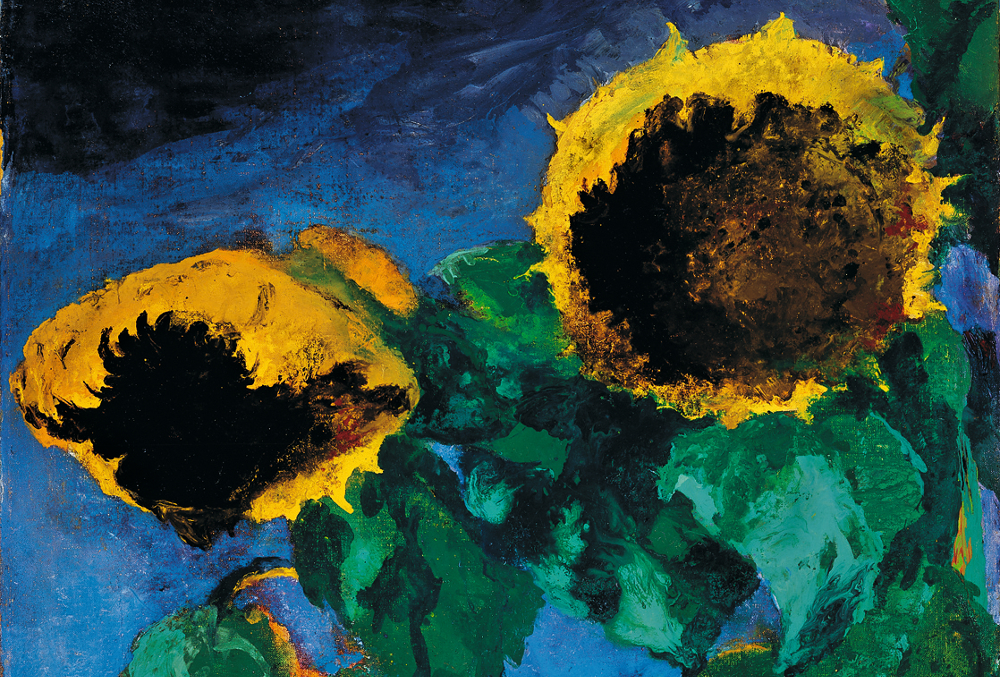 Photo by Nolde Stiftung Seebüll
Photo by Nolde Stiftung Seebüll
Hamburger Bahnhof reassesses the pro-Hitler Expressionist
The conundrum of Expressionist painter Emil Nolde (1867-1956) is that this card-carrying Nazi and vocal antisemite was also the star turn of the infamous Degenerate Art exhibition of 1937 and had more artwork than any other artist removed from museums by the Nazi regime. He wasn’t just banned from art as a profession but even from painting in private. This exhibition of 100 works claims to shed new light on this after years of academic research into the artist’s archives. Nolde is an acquired taste, if you like dauby, dark Expressionism, there’s plenty here. Close-cropped sunflowers, Jesus, Mary and Joseph (with a sunflower), small girl and mother (with sunflowers), sunflowers with other flowers… apparently he was a big Van Gogh fan. The watercolour sketches for his 1938 Viking Paintings are reflective of Nolde’s interest in Nordic myths, probably fuel for his own deluded origin myths of racial superiority. Unfortunately for him, the idea of Germans being Nordic had fallen out of favour with Hitler. Letters on display demonstrate the depth of Nolde’s antisemitism as early as 1911, while text panels tell of the artist’s desperate manoeuvring during the war to curry favour with Hitler: he placed his works in a government press officer’s apartment and ministry offices. This all came to no avail as we see in prominently displayed photographs of Nolde’s enormous nine-panelled altarpiece “The Life Of Christ” being wheeled into the Degenerate Art exhibition. While some of the works here are of artistic merit and there are doubtless interesting facts to be learned as you’re taken through the artist’s career, this exhibition really drives home that Nolde was pretty unpleasant and subsequently makes it difficult to find any joy in looking at his work.
Subscribe to our weekly Newsletter

NEWSLETTER
Leave this field empty if you’re human:
Emil Nolde: A German legend. The artist during the Nazi regime Through Sep 15